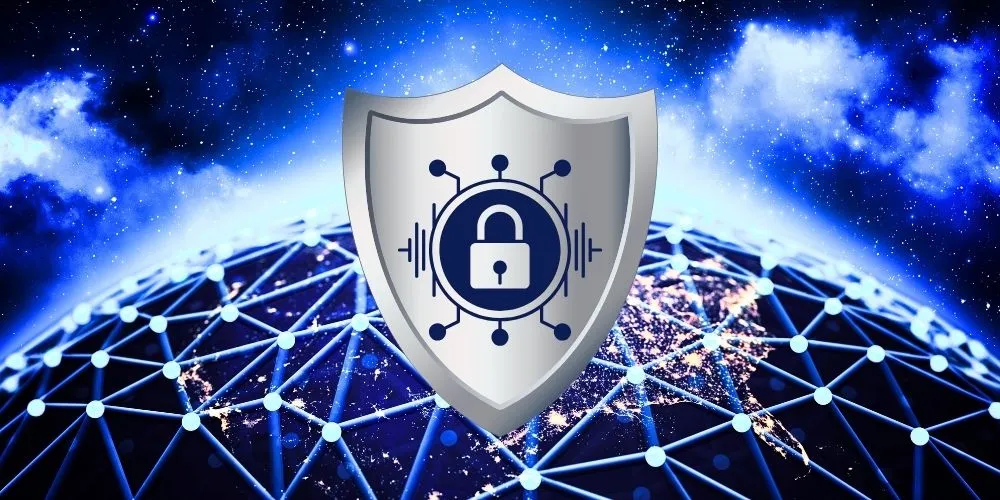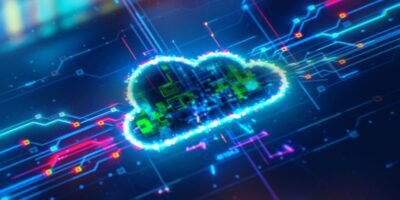In the relentless, high-stakes arms race of the 21st century, the battlefield is digital, the weapons are lines of code, and the front lines are everywhere. This is the world of cybersecurity, a multi-hundred-billion-dollar global industry built on a single, daunting premise: to defend our digital civilization from a vast, ever-evolving, and increasingly sophisticated army of adversaries. The cybersecurity software industry is the armada of this new world, the creator of firewalls, endpoint agents, threat intelligence platforms, and the myriad other tools that are the sentinels of our digital lives. For decades, this industry has been in a state of explosive growth, a seemingly unstoppable boom fueled by the equally explosive growth of our digital world and the threats that inhabit it.
But beneath this surface of booming growth and critical importance lies a far more complex and challenging reality. The cybersecurity software industry is grappling with a series of profound and existential challenges that are pushing its traditional models, technologies, and talent pools to the breaking point. This is the sentinel’s paradox: the very same forces of digital transformation that are creating the demand for cybersecurity—the move to the cloud, the explosion of data, the rise of AI—are also creating a level of complexity, scale, and adversary sophistication that the industry is struggling to keep pace with. From the overwhelming “alert fatigue” of the security operations center to the Sisyphean task of securing a global software supply chain and the looming specter of AI-powered attacks, the challenges are not just technical; they are structural, economic, and human.
The Shifting Battlefield: The Macro-Forces Reshaping the Threat Landscape
To understand the immense challenges facing the cybersecurity software industry, we must first appreciate the profound, irreversible shifts in the technological landscape that have redrawn the digital battlefield. The old world of a defensible perimeter is gone forever, replaced by a new reality that is distributed, dynamic, and defined by a level of complexity that is almost beyond human comprehension.
These macro-forces have created a new, far more difficult set of problems for cybersecurity software to address.
The Dissolution of the Perimeter: The Cloud and the Borderless Enterprise
The single most significant shift has been the move from a centralized, on-premise IT model to a decentralized, cloud-first one.
- The “Castle and Moat” is Obsolete: The old security model was a “castle and moat.” You had a strong perimeter firewall (the moat) to protect your on-premise data center (the castle). The new world is a borderless enterprise. The “castle” is now distributed across dozens of SaaS applications, multiple public cloud providers, and a fleet of remote employee laptops. There is no longer a single, defensible perimeter to protect.
- The Rise of Identity as the New Perimeter: This has forced a fundamental shift in security philosophy, from a network-centric approach to an identity-centric one. The new control plane is Identity and Access Management (IAM), a world of Zero Trust where access is granted based on who you are, not where you are. For the cybersecurity software industry, this means a massive shift in focus from network security appliances to a new generation of cloud-based identity and access control solutions.
The Explosion of the Attack Surface: An Unmanageable Number of Endpoints
The “attack surface”—the total of all the potential entry points for an attacker—has exploded in size and diversity.
- The IoT Tsunami: The Internet of Things (IoT) has connected billions of new, often insecure, devices to our networks, including smart cameras, industrial sensors, and medical devices. Each of these is a potential foothold for an attacker.
- The Rise of the API Economy: Modern applications are built by stitching together dozens of microservices that communicate via APIs. Each of these APIs is a potential attack vector that must be secured.
- The Cloud-Native World: The ephemeral and dynamic nature of containers and serverless functions in a cloud-native environment means that the attack surface is not just large; it is constantly changing, with thousands of new potential targets being created and destroyed every minute.
The Industrialization of the Adversary: From Lone Hacker to Cybercrime Inc.
The adversary is no longer a lone, mischievous hacker in a basement. The world of cybercrime has become a highly professionalized, multi-billion-dollar global industry, and well-funded, state-sponsored actors are now carrying out the most sophisticated attacks.
- The Ransomware-as-a-Service (RaaS) Economy: The rise of RaaS has democratized the ability to launch devastating ransomware attacks. A less sophisticated criminal can now simply “rent” the malware and the infrastructure from a professional RaaS gang and share in the profits.
- The State-Sponsored Threat: Nation-states are now using cyber operations as a key instrument of espionage, sabotage, and geopolitical conflict. These state-sponsored groups have the time, resources, and talent to develop “zero-day” exploits and carry out incredibly sophisticated, long-term “Advanced Persistent Threat” (APT) campaigns.
The Sentinel’s Burden: The Key Challenges Facing the Cybersecurity Software Industry Today
In response to this new, far more challenging landscape, the cybersecurity software industry is facing a series of deep, structural problems. These are the critical issues that CISOs (Chief Information Security Officers), security vendors, and investors are grappling with in 2025 and beyond.
The Overwhelming Complexity and “Tool Sprawl”: A Patchwork of Point Solutions
The first and most visible challenge is the sheer, unmanageable complexity of the modern enterprise security stack. In a desperate attempt to plug every new hole that has appeared in the dissolving perimeter, the average large enterprise has deployed a dizzying array of security tools from dozens of different vendors.
This “tool sprawl” has created a new set of problems that are, in many ways, as bad as the ones it was meant to solve.
- The Problem of “Alert Fatigue”: Each of these tools generates its own stream of alerts. The result is a tsunami of low-fidelity, uncontextualized alerts that completely overwhelm the security operations center (SOC) team. This “alert fatigue” is one of the biggest problems in modern security. Human analysts are so inundated with noise that they inevitably miss the one or two critical alerts that signal a real, sophisticated attack.
- The Lack of Integration and a “Single Pane of Glass”: These point solutions from different vendors rarely talk to each other. This means that an analyst has to manually pivot between a dozen different consoles—the EDR, the firewall, the cloud security tool, the email security gateway—to try and piece together the story of an attack. The long-promised “single pane of glass” for security remains an elusive dream for most organizations.
- The High Total Cost of Ownership (TCO) and the Skills Gap: The cost of buying, implementing, and managing this sprawling collection of tools is enormous. Worse, each of these tools requires specialized skills to operate, exacerbating the already severe cybersecurity skills gap.
The Industry’s Response: The Rise of the “Platform” and Consolidation
In response to this crippling complexity, the single biggest trend in the cybersecurity software market today is a massive push towards consolidation and the rise of the security “platform.”
- The “Best-of-Breed” vs. “Best-of-Platform” Debate: The old model was a “best-of-breed” approach, where a CISO would buy the best individual tool for each specific problem. The new model is a “best-of-platform” approach, in which the CISO increasingly consolidates their security stack with fewer large, strategic vendors that can offer a broad, integrated platform of capabilities.
- The New Platform Categories: We are seeing the emergence of new, consolidated platform categories, such as:
- XDR (Extended Detection and Response): XDR platforms aim to break down the silos between different security telemetry sources. An XDR platform will ingest data from endpoints (EDR), email, the network, and the cloud, and then use AI to correlate these signals to provide a more unified, context-rich detection of attacks.
- CNAPP (Cloud-Native Application Protection Platform): CNAPPs consolidate a range of previously separate cloud security tools—from Cloud Security Posture Management (CSPM) and Cloud Workload Protection (CWPP) to Kubernetes security—into a single, integrated platform for securing the entire cloud-native lifecycle.
- The M&A Frenzy: This trend is driving a massive wave of mergers and acquisitions across the industry, as large platform vendors (such as Palo Alto Networks, CrowdStrike, and Zscaler) are aggressively acquiring smaller, innovative point-solution vendors to expand their platform capabilities.
The Sisyphean Task of Securing the Software Supply Chain
The “Log4Shell” vulnerability was a brutal wake-up call. It revealed that the very foundation of the modern digital economy—the vast, interconnected world of open-source software—was also its greatest and most unmanaged security risk.
The challenge of securing the software supply chain has become one of the most complex and critical problems for the cybersecurity industry.
- The Problem of “Dependency Hell”: Modern applications are not written; they are assembled. A typical application consists of hundreds, or even thousands, of open-source components and their “transitive dependencies.” A single vulnerability in a single, obscure open-source library can create a cascading vulnerability across thousands of applications.
- The New Generation of Supply Chain Attacks: Attackers have realized that the easiest way to target a thousand organizations is to exploit the one piece of software they all use. We are seeing a new and terrifying wave of sophisticated supply chain attacks, such as:
- Compromising Open Source Repositories: Attackers compromise the accounts of legitimate open-source maintainers or use techniques such as “typosquatting” to upload malicious packages to public repositories like npm and PyPI.
- The SolarWinds Attack: This landmark attack showed how state-sponsored actors could compromise the build process of a trusted software vendor and insert a malicious backdoor into a legitimate software update, which was then distributed to thousands of the vendor’s customers.
The Industry’s Response: A New Generation of Supply Chain Security Tools
The cybersecurity software industry is racing to build a new generation of tools to address this challenge.
- The Ubiquity of SCA and the SBOM: As discussed, Software Composition Analysis (SCA) tools and the Software Bill of Materials (SBOM) have become the foundational technologies for creating transparency in the supply chain.
- Beyond SCA: The Next-Gen Solutions: A new wave of startups and established players are now building solutions that go beyond simple vulnerability scanning. These tools can analyze the behavior of an open-source component, help secure the CI/CD pipeline itself, and provide a more holistic “chain of custody” for a software artifact using frameworks like SLSA and digital signing technologies like Sigstore.
The Human Element: The Chronic and Unsolvable Skills Gap
The most persistent and most difficult challenge facing the industry is the human one. There is a massive and growing global shortage of skilled cybersecurity professionals.
This skills gap is a major constraint on the industry’s growth and on organizations’ ability to defend themselves effectively.
- The Scale of the Shortage: The latest studies from organizations like (ISC)² estimate the global cybersecurity workforce gap to be in the millions. There are far more open cybersecurity jobs than there are qualified people to fill them.
- The Burnout Crisis in the SOC: The people who are on the front lines, the security analysts in the Security Operations Center (SOC), are facing a burnout crisis. They are overworked, under-resourced, and overwhelmed by the sheer volume of alerts from the “tool sprawl” we discussed earlier.
The Industry’s Response: Automation, AI, and a New Focus on Usability
The only viable, long-term solution to the skills gap is to use technology to make the existing cybersecurity workforce far more productive and to make security tools more accessible to a broader range of IT professionals.
- The Rise of SOAR (Security Orchestration, Automation, and Response): SOAR platforms are a key technology for combating burnout in the SOC. They allow security teams to automate the routine, repetitive tasks of the incident response process, freeing up human analysts to focus on more complex, high-value investigation and threat-hunting activities.
- AI as the Analyst’s Co-pilot: AI and machine learning are becoming an essential “co-pilot” for the security analyst. AI-powered systems can automatically triage alerts, correlate signals from across the network, and surface the one or two truly critical threats from a sea of noise, acting as a powerful force multiplier for the human team.
- The “Democratization” of Security: There is a major push to make security tools more intuitive and easier to use, and to embed security capabilities directly into the IT and developer platforms people already use. The goal is to “democratize” security, making it a shared responsibility rather than the sole domain of a small team of elite specialists.
The AI Arms Race: The Rise of AI-Powered Attacks
The same AI technologies that the cybersecurity industry is using to build its next-generation defenses are also being weaponized by attackers. We are at the very beginning of a new AI-powered arms race.
In 2025 and beyond, the most sophisticated attacks will be AI-driven, requiring AI-driven defenses to counter them.
- AI for Reconnaissance and Social Engineering: Attackers are using AI to automate reconnaissance, scraping social media and corporate websites to build highly detailed profiles of their targets. Generative AI is being used to create highly convincing, personalized phishing and spear-phishing emails at a massive scale. The rise of deepfake audio and video also creates a powerful new tool for impersonation and social engineering.
- AI-Powered and Evasive Malware: The next generation of malware will be AI-powered and evasive. It will be able to autonomously learn and adapt to its environment, change its code to evade detection by traditional signature-based antivirus (“polymorphic malware”), and identify and exfiltrate the most valuable data on a network with minimal human intervention.
- Hacking the AI Itself: New Attack Vectors. As companies become more reliant on AI and machine learning models, these models themselves become a new, high-value attack surface. We are seeing the rise of a new class of attacks that are specifically designed to target AI systems:
- Data Poisoning: An attacker could subtly manipulate the training data of an AI model to create a hidden backdoor or to cause it to make specific, desired errors.
- Adversarial Examples: An attacker can create a tiny, almost imperceptible perturbation to an input (like an image) that is designed to fool a machine learning model into making a wildly incorrect classification.
The Industry’s Response: AI to Fight AI
The only way to defend against these AI-powered attacks is with a new generation of AI-powered defenses. The cybersecurity industry is in a race to build defenses as dynamic, adaptive, and autonomous as the threats they face. This is a core focus of R&D efforts across all major cybersecurity vendors.
The Challenge of Data Privacy and a Fragmenting Global Internet
The cybersecurity software industry, which is global by nature, is facing a new and complex challenge: a fragmenting regulatory landscape driven by a renewed focus on data privacy and data sovereignty.
- The GDPR and the “Brussels Effect”: The EU’s General Data Protection Regulation (GDPR) has set a new global standard for data privacy. It has strict requirements for how personal data must be secured, forcing cloud-based cybersecurity companies to build their services in compliance with these rules.
- The Rise of Data Sovereignty: A growing number of countries are implementing “data sovereignty” or “data localization” laws that require the data of their citizens to be stored and processed within the country’s physical borders. For a global, cloud-based cybersecurity vendor, this creates a massive operational challenge, forcing them to build out separate, regional data centers to comply with these laws.
- The “Splinternet”: This regulatory fragmentation is contributing to the rise of a “Splinternet”—a world where the open, global internet is being replaced by a series of national or regional internets, each with its own rules and approved security technologies.
The Future of Cybersecurity Software: Charting the Path to a More Resilient Future
Faced with this immense and evolving set of challenges, the cybersecurity software industry is not standing still. It is in a period of intense innovation, consolidation, and strategic realignment.
Several key trends are shaping the industry’s future and its path toward a more effective, sustainable security posture in the digital world.
The Inevitable March of Platformization and Consolidation
The trend of moving from best-of-breed point solutions to integrated platforms will not only continue; it will accelerate. The economic and operational benefits are too compelling. The future belongs to a small number of large, strategic security platforms that can provide a broad, integrated, and AI-powered set of capabilities.
A Deeper Integration of Security into the Fabric of IT
The future of security is to become less visible, not more. Instead of being a separate, bolt-on layer, security will become a deeply integrated, native feature of the core IT and developer platforms. We are already seeing this with the major cloud providers (AWS, Azure, GCP), who are now major cybersecurity vendors in their own right, building a huge range of security capabilities directly into their cloud platforms.
The Rise of Identity Threat Detection and Response (ITDR)
As identity becomes the new perimeter, a new and critical category of security software is emerging: ITDR. ITDR tools are specifically focused on protecting the identity infrastructure itself. They use a combination of analytics, deception technology, and real-time monitoring to detect and respond to threats like compromised credentials, privilege escalation, and lateral movement.
The Future is Autonomous: The Self-Driving SOC
The ultimate vision for the future of security operations is the “self-driving SOC.” This is a world where the vast majority of the detection, investigation, and response lifecycle is handled autonomously by an integrated, AI-powered security platform. The human analysts will be elevated from the role of “alert jockeys” to “AI supervisors”—strategic thinkers who manage the autonomous system, hunt for the most sophisticated and novel threats, and continuously work to improve the system’s intelligence.
Conclusion
The world of cybersecurity software is one of the most challenging, dynamic, and critically important sectors of the entire global technology industry. It is an industry locked in a perpetual, high-stakes arms race with an intelligent, adaptable, and unconstrained adversary. The challenges are immense—the complexity is overwhelming, the attack surface is infinite, the talent is scarce, and the adversary is now being armed with the same powerful AI tools as the defenders.
Yet, for all these challenges, it is also an industry of incredible innovation and resilience. In response to the chaos of tool sprawl, a new era of platform consolidation and integration is dawning. In response to the terror of the supply chain attack, a new science of software transparency and integrity is being born. And in response to the overwhelming scale of the data and the sophistication of the threat, a new partnership is being forged between human expertise and artificial intelligence.
The work of the sentinel is never done. The watch is an endless one. But by embracing a new, more integrated, automated, and intelligent approach to security, the cybersecurity software industry is not just meeting today’s challenges; it is building the resilient digital foundation for a safer, more trustworthy tomorrow.













